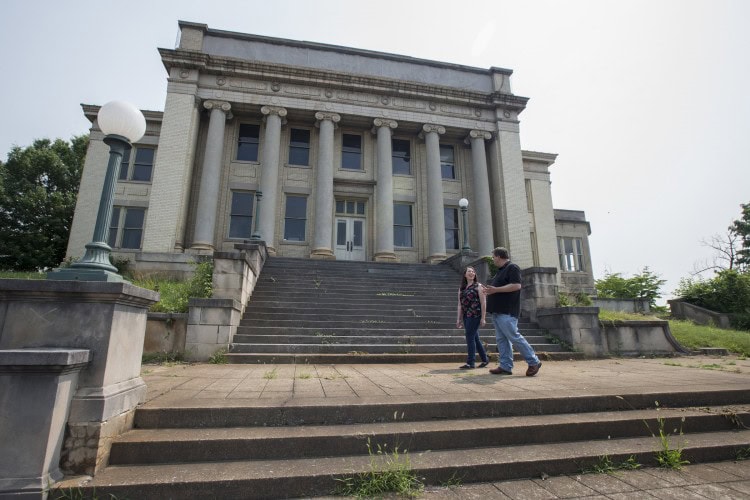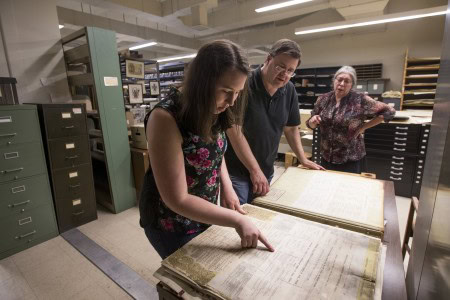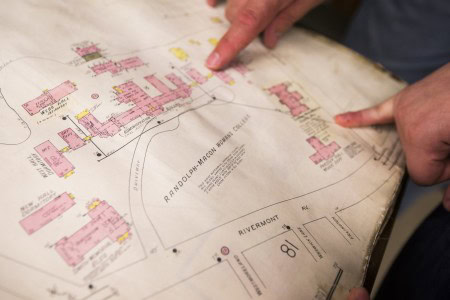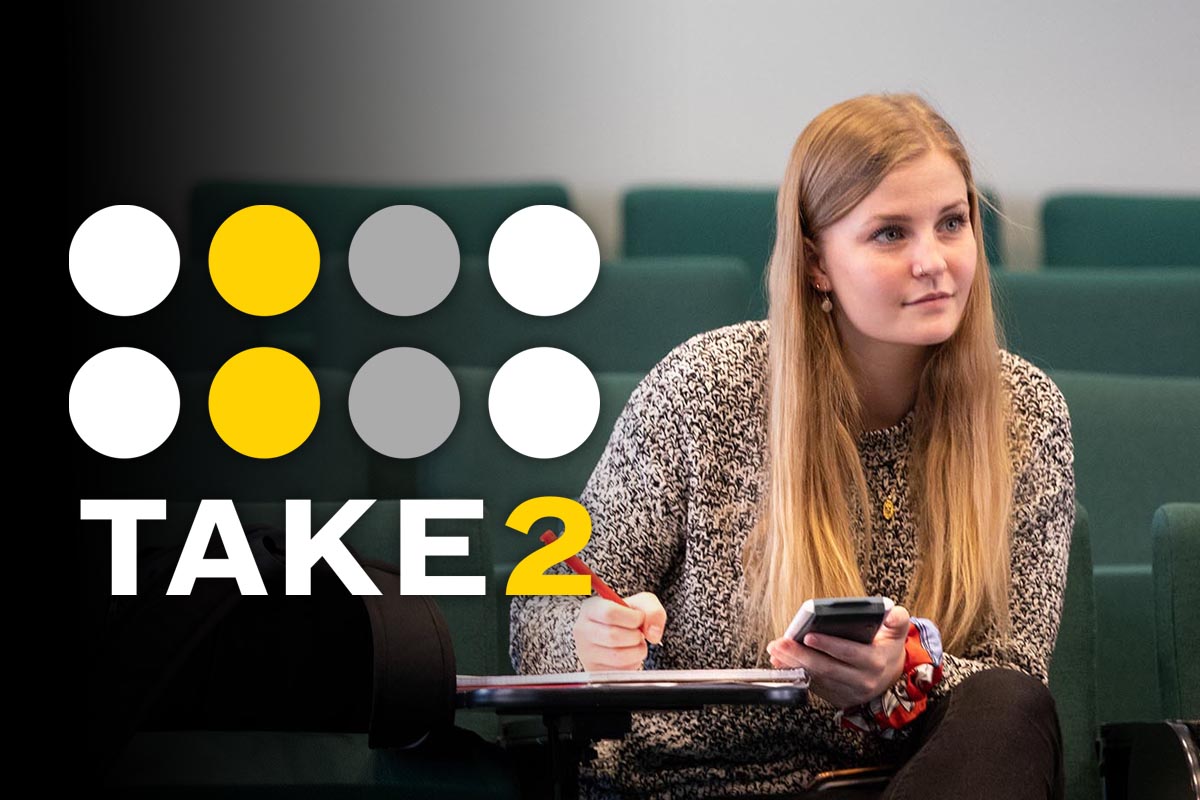Summer Research takes student on a trip down memory lane

History professor Gerry Sherayko and Samantha Strickler ‘17 visit the old Jones Memorial Library building on Rivermont Avenue.
Samantha Strickler ’17 is happiest in a room full of books and historical documents. Thanks to her Summer Research project, the history major from Luray, Virginia, feels like she is spending the eight weeks of the program in paradise.
Strickler and history professor Gerry Sherayko have spent the summer flipping through pages of old Lynchburg City directories, comparing maps, and listening to recorded interviews with knowledgeable sources in order to complete an online archive of the history of the Rivermont Historic District. Much of their research has been done at the Jones Memorial Library, where Strickler says she feels like a kid in a candy store.
“The first time we went to Jones I think I had a stupid grin on my face all day.” she laughed. “You get to hold history, and that’s really awesome.”
Strickler’s focus is on businesses, homes, and individuals who have lived in the Rivermont Historic District since 1940. The area was designated as a historic district in 2002, and is the largest in Lynchburg, stretching from 5th Street to Link Road.

Samantha Strickler ‘17 and history professor Gerry Sherayko look up property records from the early 1900s in the Jones Memorial Library.
According to Sherayko, most of the buildings in the Rivermont Historic District, including those on the College campus, were constructed between 1890 and 1940. A trolley service once provided transportation from the College to different parts of the city, and Sherayko noted that the construction of the Rivermont Bridge was highly touted as a key factor in the area’s development.
“Before they built the bridge, there was very little development out here because the ravine is quite deep there,” said Sherayko. “The bridge is supposedly as high up from the creek there as the Brooklyn Bridge is from the East River.”
Sherayko is a board member for the Friends of Rivermont Historical Society, which decided to document the district’s history online in 2010. Sherayko worked with Randolph students that summer and again in 2011 to create friendsofrivermont.org, where historians can view information on past and present residents, as well as photos showing the architecture of the oldest homes and businesses in the area.
Those projects also included the interviews of about 30 people who have lived in the district or are knowledgeable about the area’s history. Many talked about the houses they lived in, the schools they attended, or the hospital they were born in, among other things.
“The interview might not necessarily be about their house, but more about their experiences or their life,” said Sherayko.
For this year’s project, Strickler is reviewing each of those recorded interviews and will share her notes on the website. She’ll also be conducting several more interviews of her own. Sherayko hopes the project will honor the memories of individuals like former College President William F. Quillian, Jr., and Annie Massie ’52, the first president of the Friends of Rivermont.
Sharing the voices of Rivermont’s history has become even more crucial as some of those citizens instrumental in Lynchburg’s history have passed on, Sherayko said. “It’s really important to get their words out there,” said Sherayko.
Strickler has enjoyed learning more about the history of her school during the process, and said her favorite interviews are those with Randolph-Macon Woman’s College alumnae speaking about their College experiences. Some of the stories she has heard are about Wednesday “Tea Times” in Main Hall and the strict dress codes that were enforced in the past.
“They had to wear dresses when they were walking on front campus,” she said. “And they couldn’t wear pants in the ‘60s.”
She also learned about sorority houses that existed in the 1930s, a gymnasium that used to be located behind Bell Residence Hall, and a laundromat that was behind Webb Residence Hall. But most of all, Strickler said she has enjoyed learning about a place she loves.
“When you drive down Rivermont, it’s hard to keep focused,” she said. “The architecture is so diverse and beautiful. You see the history of the houses and listen to these people talk about them. Then you look at directories and notice how things changed year to year, it’s just really interesting.”
Tags: Gerry Sherayko, history, summer research, Summer research 2015

